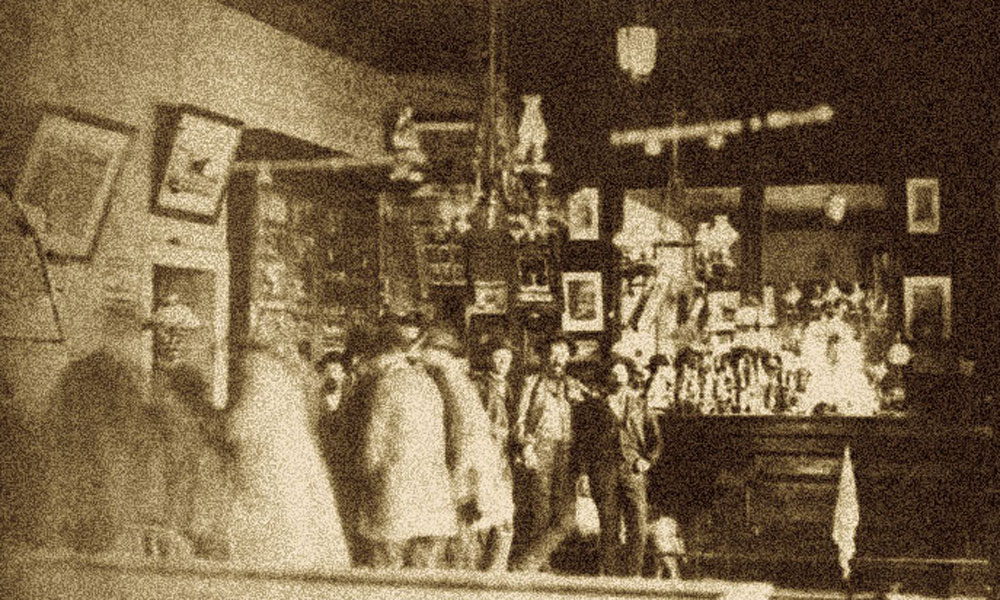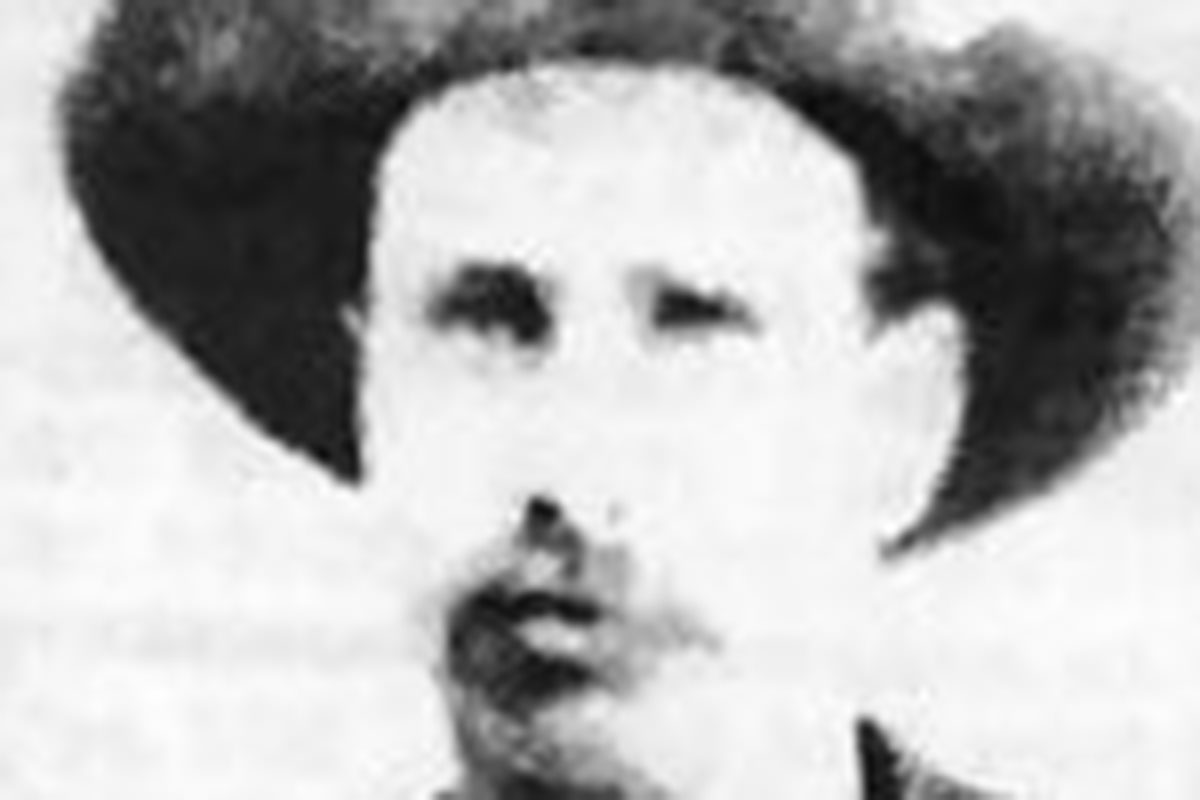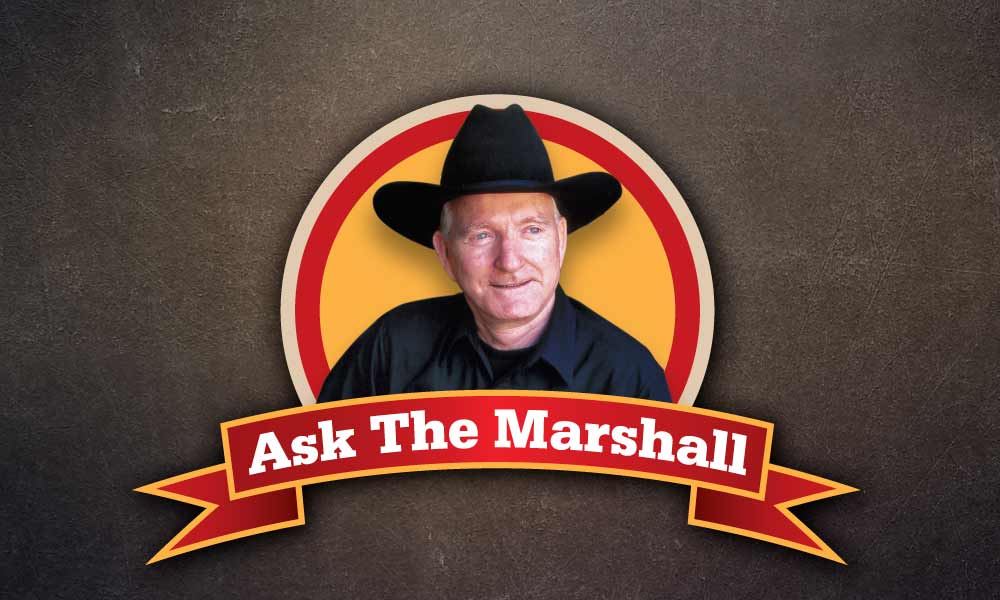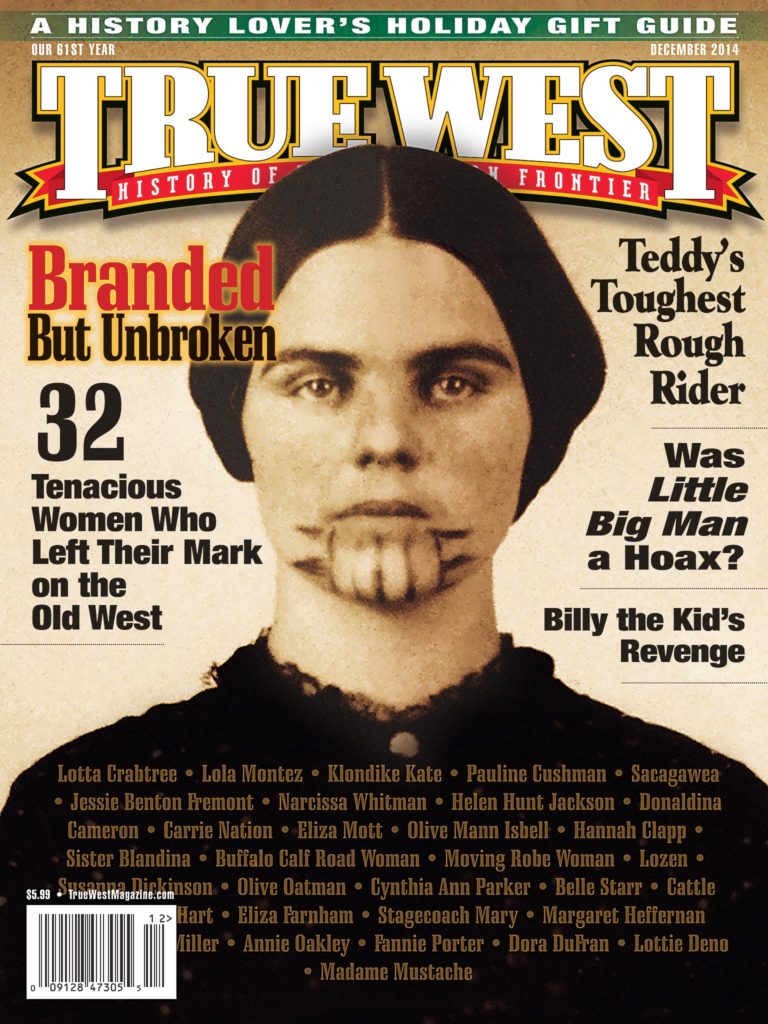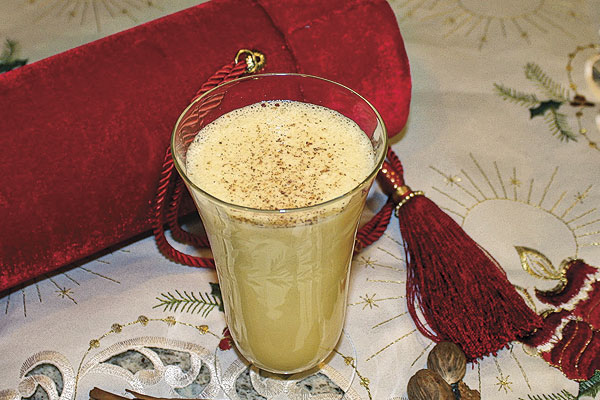 The hens only lay egg-nog at Christmas-tide, but egg-nog will lay a man any time he tackles it,” reported the Idaho Avalanche on January 3, 1880. In 1881, The Herald in Omaha, Nebraska, also found eggnog a subject for humor: “Hens favor sobriety. They generally quit laying when the egg-nog season approaches.”
The hens only lay egg-nog at Christmas-tide, but egg-nog will lay a man any time he tackles it,” reported the Idaho Avalanche on January 3, 1880. In 1881, The Herald in Omaha, Nebraska, also found eggnog a subject for humor: “Hens favor sobriety. They generally quit laying when the egg-nog season approaches.”
Out on the frontier, eggnog was not just a holiday beverage, but also a saloon drink year-round. In 1881, eggnog was ranked as the eighth most popular saloon beverage. It was served hot or cold. Toward the end of the century, frozen eggnog was all the rage.
In Tombstone, Arizona, 1,200 eggs were used to make the New Year’s Day eggnog in 1889. That same year, The Weekly News in Denver, Colorado, reported a new fashionable trend. Serving eggnog in a traditional glass was now blasé. The new glass was a hollowed-out orange. After pouring in the eggnog, you replaced the top and inserted two straws tied with ribbon. In 1890, papers reported eggnog should be served with a foie gras sandwich.
As with any beverage containing alcohol, eggnog should be consumed in moderation. One man in Dallas, Texas, partook of too much eggnog over the Christmas holiday in 1877 and let his horse get the better of him. While driving his buggy up Main Street, he lashed the horse to get it to trot faster, which it did, but the drunken man was powerless to hold the reins. His horse ran straight into a gas post. The man was thrown from his buggy, which smashed into pieces. The horse ran away with the remains.
One man in Salt Lake City, Utah, in 1866, forgot to pay his $10 fine for a previous drinking violation. When the police caught up with the chap, he was “enjoying himself over a potation of egg-nog, a canvas
back duck, and a dish of Mobile oysters. The gourmand was cruelly torn away from his gastronomical pleasures, incarcerated in the lockup, furnished with a ball and chain, to which are to be added those novel and musical instruments, a pick and shovel.”
Eggnog and cigarettes did not mix—at least not for Alice Melville of St. Louis, Missouri. In 1896, Alice told lawmen that cigarettes, not the eggnog, had caused her intoxication. She also blamed the cigarettes as the reason she had set her bed on fire! The police didn’t believe her since she had been charged for mixing the two twice since Christmas.
This holiday, try out the recipe for a Victorian eggnog. But be careful, as this eggnog has been proven to be addictive and dangerous.
*** R E C I P E ***
~Eggnog~
3 eggs, separated
1 c. powdered sugar
1 1/2 cups cream
1 /4 tsp. nutmeg
1 T. powdered sugar for egg whites
1/8 c. Brandy & Rum
1 cinnamon stick for grating
Beat the egg yolks and sugar together in a bowl and set aside. Beat the egg whites
with 1 T. sugar until stiff peaks form and refrigerate. Heat the cream and nutmeg in a medium saucepan
over medium high heat and bring just to a boil, stirring occasionally. Remove from the heat and
gradually add hot cream into the egg and sugar mixture. Return everything to the pan and cook until
the mixture reaches 160°F. Remove from the heat and place in a bowl; set in the
refrigerator to chill. Fold the egg whites into the egg mixture and combine.
Serve with grated cinnamon and nutmeg. Serves 2.
*Note: It’s dangerous to consume raw eggs, so be sure to cook the yolks to 160°F.
***
Recipe adapted from the Idaho Daily Statesman,
December 12, 1892
Sherry Monahan has penned Mrs. Earp: Wives & Lovers of the Earp Brothers; California Vines, Wines & Pioneers; Taste of Tombstone; The Wicked West and Tombstone’s Treasure. She’s appeared on the History Channel in Lost Worlds and other shows.


